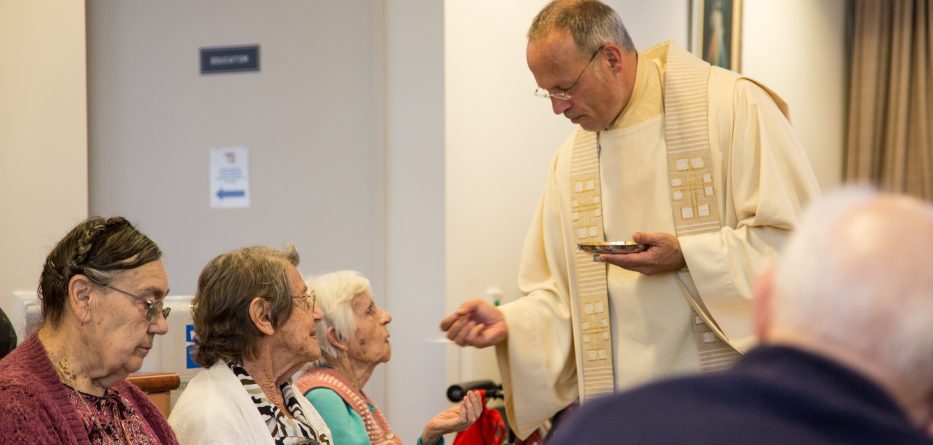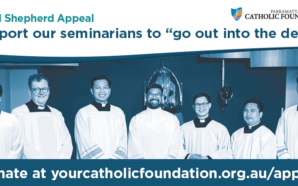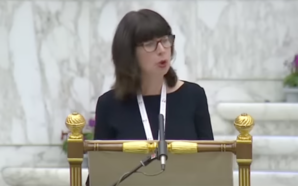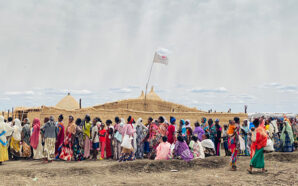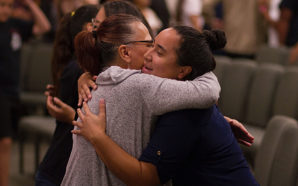By Jordan Grantham, Catholic Outlook, December 2016
Visit St Raphael’s Chaplaincy at Blacktown, and leave Western Sydney behind, as you step into a slice of Germany.
St Hedwig Village is an important part of the community, founded for retirees and the elderly.
European carved statues adorn the chapels and spaces, intercom announcements are in German and English and traditional German hymns contribute to a thoroughly Germanic atmosphere.
The residents will greet you with a cheerful “Hallo!” or if they are from Bavaria, “Grüß Gott!” meaning ‘May God bless/greet you’.
The residents of St Hedwig Village gather for Mass in either the St Hedwig Chapel, St Raphael Church, or the ‘link’ area, resembling a chapel.
Two young volunteers are at Mass. They are on an overseas volunteering program that originated as a substitute to German National Service.
St Raphael’s chaplaincy partners with St Christophorus’ Church and chaplaincy in the Archdiocese of Sydney. Their chaplain is Fr Roland Maurer, of the Diocese of Rottenburg-Stuttgart.
The patronal feast of St Raphael in September is an important community celebration, which coincides with the dedication day of the St Raphael Chapel. The day includes ‘volkstanzen’, traditional folk dancing with lederhosen and dirndl dresses.
St Hedwig’s Day is normally celebrated mid-October with a spring fair.
Soon the community will celebrate Epiphany on 6 January with traditional Sternsinger, which are children choristers dressed as the three magi.
On a regular basis, about 50 people attend Sunday Mass at St Christophorus, with some people travelling from Sydney CBD and as far as Canberra and Port Macquarie for special occasions.
There are regular German language classes on Monday nights in Croydon, preparing students for the Sprachdiplom, which allows students to pursue tertiary study in Germany.
The German Catholic community began in Australia with post-World War II migrants. Many of them were refugees from central and eastern Europe, when German communities were evacuated or forcibly removed.
In St Raphael’s Chapel, there is a moving memorial to deceased ancestors of community members. It commemorates people who died in Yugoslavia, Romania, Russia, Finland and Germany.
It is in a similar period and context that Kirche in Not, Aid to the Church in Need, started.
Fr Maurer emphasises the importance of remembering the origins of the community and the chaplaincy.
“When we started off the idea was to welcome the stranger, the Germans migrating to Australia, to receive them here and provide them with support by spiritual and practical means. Welcoming the stranger is still something we should never forget,” Fr Maurer said.
Germany has welcomed hundreds of thousands of refugees over the years. People feel obliged to “not shut the door,” Fr Maurer said.
He compared the recent refugee crisis to the fall of the Iron Curtain and destruction of the Berlin Wall.
Fr Maurer described the chaos of the reception of East German refugees. “School gyms were turned into camps and people stayed in family homes,” he said.
After World War II, “mayors would have to speak to farmers” about having East German refugees staying and “you had Catholics in Protestant places” and people speaking different varieties of languages.
This exacerbated the disorientation after the refugee intake, Fr Maurer said. There has not been the same level of disruption with the recent refugee crisis.
The German Catholic community first settled in the Hunter Valley in the 19th Century, changing over the years. The children of the first migrants have become part of mainstream Australian culture.
Now the community, especially at St Hedwig Village, welcomes non-Germans to live with them and appreciate their cultures, continuing their mission to ‘welcome the stranger’.




